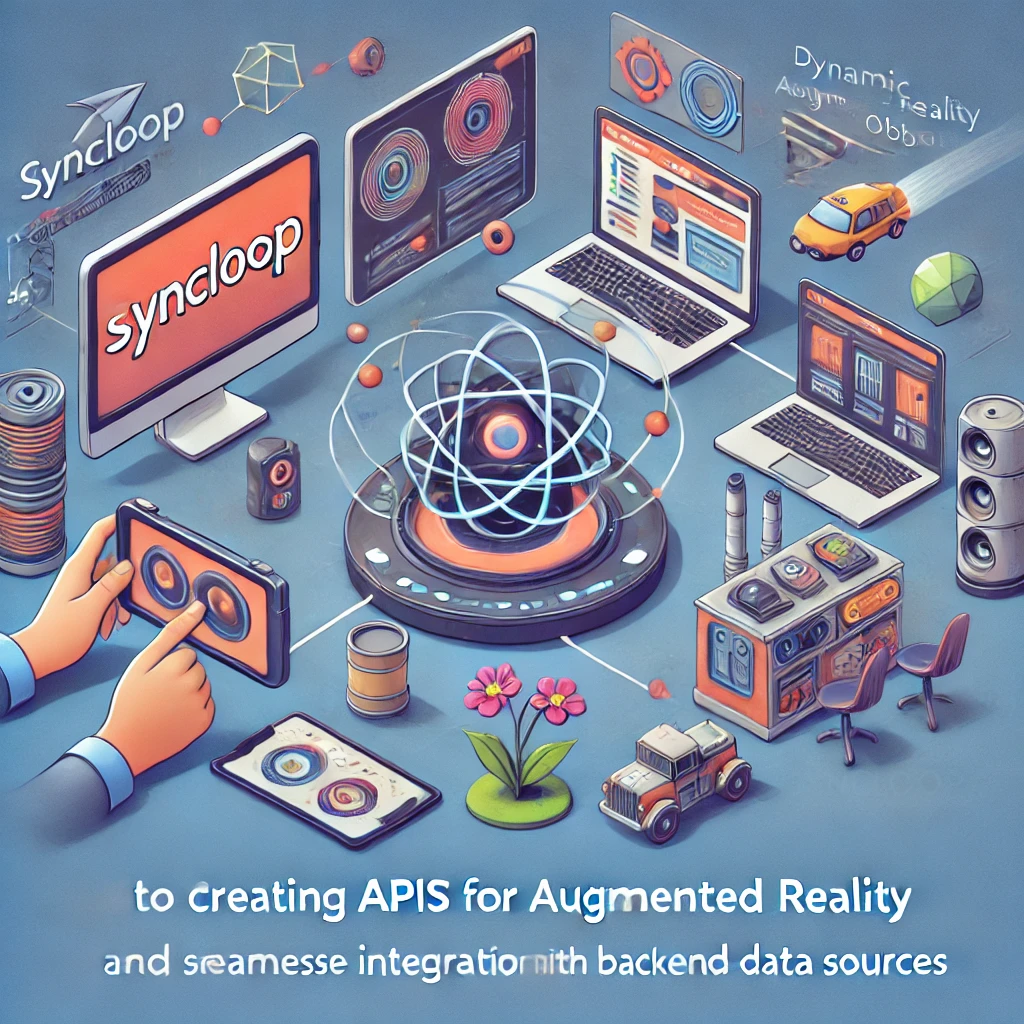Creating APIs for Augmented Reality Platforms Using Syncloop

Syncloop simplifies the development of APIs for AR platforms, providing tools for real-time data handling, secure integrations, and scalable performance. This blog explores how Syncloop empowers developers to create APIs tailored for AR applications, with insights into best practices and real-world use cases.
The Role of APIs in AR Platforms
APIs are essential for enabling AR platforms to deliver dynamic and interactive experiences. Key functionalities include:
- Real-Time Data Processing: APIs manage and deliver data for rendering AR objects, ensuring a smooth experience.
- Geolocation Integration: Connect with location services to overlay AR content based on user position.
- Object Recognition: Integrate with machine learning and vision APIs to recognize objects in the user’s environment.
- User Interactions: Facilitate actions like capturing AR-enhanced images, sharing experiences, or interacting with AR elements.
- Device Compatibility: APIs ensure seamless functionality across various devices and platforms.
How Syncloop Simplifies AR API Development
Syncloop offers robust tools and features for building and managing AR platform APIs:
1. Real-Time Communication
Syncloop supports WebSocket and REST APIs for low-latency data exchange, enabling real-time interactions in AR applications.
2. Dynamic Data Mapping
With Syncloop’s data mapping tools, developers can transform and route data to ensure compatibility between APIs and AR engines.
3. Geolocation and Mapping
Integrate geolocation APIs and mapping services like Google Maps to provide location-based AR experiences.
4. Image and Object Recognition
Seamlessly connect with machine learning and computer vision APIs for recognizing objects and landmarks in AR applications.
5. Event-Driven Workflows
Trigger events and workflows based on user actions or environmental changes, enhancing interactivity.
6. Secure Integrations
Implement OAuth 2.0, API keys, and encryption to protect sensitive data exchanges in AR platforms.
7. Scalable Infrastructure
Syncloop’s architecture handles high volumes of real-time data and interactions, ensuring reliability under heavy usage.
8. Monitoring and Analytics
Track API performance, usage patterns, and error trends to optimize and improve the AR experience.
Benefits of Using Syncloop for AR APIs
1. Accelerated Development
Syncloop’s low-code tools and prebuilt connectors streamline the creation of complex AR APIs.
2. Enhanced Performance
Real-time communication and optimized data handling ensure a smooth and immersive AR experience.
3. Scalability
Syncloop’s infrastructure supports increasing user demands and dynamic AR interactions.
4. Seamless Integrations
Connect AR platforms with external services like geolocation, vision APIs, and content delivery networks effortlessly.
5. Robust Security
Protect user data and interactions with built-in security features.
Real-World Applications of AR APIs Built with Syncloop
1. Retail and E-Commerce
AR APIs enable features like virtual try-ons for clothing or furniture, enhancing the online shopping experience.
2. Gaming
Create immersive multiplayer AR games with real-time updates and location-based elements.
3. Education
Develop AR applications that overlay educational content onto real-world objects for interactive learning experiences.
4. Healthcare
APIs power AR tools for medical training, surgical assistance, and patient education.
5. Tourism
Provide AR-guided tours that overlay historical information or navigation instructions on landmarks.
Best Practices for AR API Development with Syncloop
- Prioritize Real-Time Capabilities: Use WebSocket APIs to ensure low-latency communication for smooth AR interactions.
- Leverage Geolocation: Integrate mapping and location services to deliver context-aware AR content.
- Ensure Device Compatibility: Test APIs across multiple devices and platforms to ensure consistent functionality.
- Optimize Data Handling: Use Syncloop’s data mapping tools to process and deliver only the necessary data, reducing latency.
- Secure API Interactions: Implement robust authentication and encryption to protect sensitive user and application data.
- Monitor and Refine: Use analytics to track usage and performance, making iterative improvements based on insights.
Conclusion
APIs are integral to building AR platforms that deliver dynamic, interactive, and scalable experiences. Syncloop simplifies the development of these APIs, providing tools for real-time communication, seamless integrations, and robust security.
Whether you’re creating AR applications for retail, gaming, education, or healthcare, Syncloop equips you with the capabilities to build and manage APIs efficiently. Embrace Syncloop to transform AR experiences and drive innovation in your applications.
A conceptual illustration of AR APIs in action, showcasing real-time data exchange, geolocation integration, and dynamic object recognition powered by Syncloop.
Back to Blogs